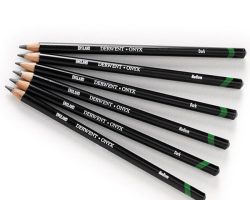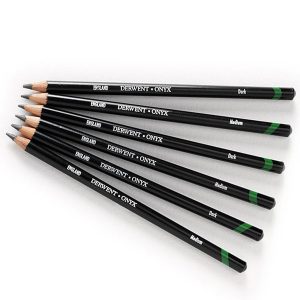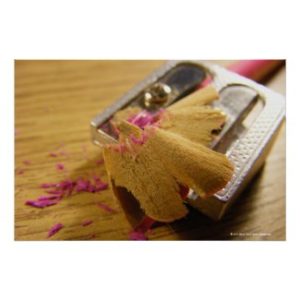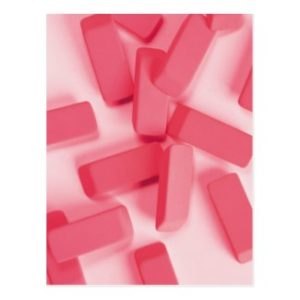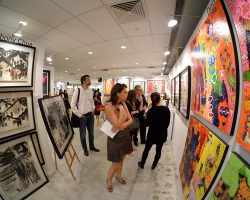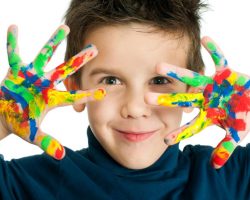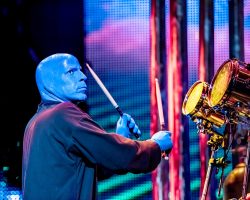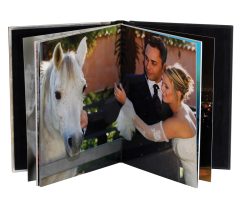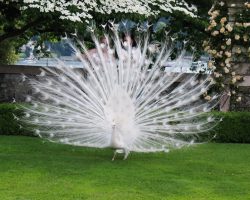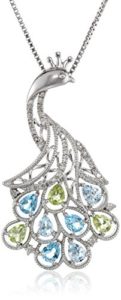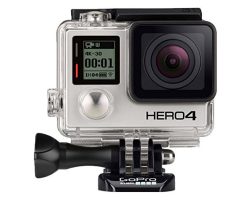Some Basic Information To Get You Started Doing Art/Craft Fairs And Festivals
This lens was created to provide information to those thinking of getting into the art fair circuit. It is designed to cover the fundamentals and the many challenges of doing this kind of event.
I am a working artist who has been marketing my art through art fair venues for over 15 years. I can honestly say that art fairs are what has taken my art from a hobby into a thriving art business.
5 best things that I like about art fairs.
1. Being out in beautiful weather
2. The hauling and toting keeps me in shape (sort of)
3. The positive feedback and high sales (Okay maybe money should have been 1.)
4. Travel. I go to places that I otherwise would not.
5. People. Not only meeting animal people and hearing their stories but also making new artist friends.
Anyone who has read my blog Fur In The Paint has heard me go on and on about the difficulties I face doing the art fair circuit every year. I have been rained on, rained out, hailed on, and once even snowed on! There have been tornadoes. I have suffered from heat exhaustion, freezing temperatures, cranky customers, unprofessional art fair management and the list of atrocities doesn’t end there. This all culminates in the fact that the older I get, the less I like all the hauling and toting as we pack around 1,500 lbs of artwork, displays and tents (yes, we take more than 1 tent.)
5 Worst things about art fairs.
1. Inclement weather
2. All that hauling and toting
3. Emotionally crushing low sales
4. Sales tax collection
5. Obnoxious or rude people
So if your pondering doing fairs and festivals read on as this will give you some idea of what’s in store and how best to handle it.
All copyrights are retained by the artist,
Mona Majorowicz of Wild Faces Gallery.
The artwork or content in this lens may not be used or reproduced, either
in part or in whole, without the express written consent from the artist.
Brookings Summer Art Festival
Finding An Art Fair Venue That’s Right For You
Sorting Through The Sea Of Art Fair Events To FInd A Good Fit For You and Your Work
Okiboji 2009 There are plenty of events out there to choose from and most every small town town has at least one. Small events are good for testing the waters and getting the hang of what actually goes into a successful fair for you. But the real money comes from doing larger events.
Here are some rules of thumb I use for choosing events.
To be clear it doesn’t mean that an event that falls into these rules can’t still be successful, it’s just a whole lot less likely.
* Must have an attendance of at least 30,000 people for the event. Ideally 75,000 to 150,000 is good.
* Event has been running for at least 5 years. Usually new events struggle to advertise adequately. It takes time for a good event to build a client base. That doesn’t mean I don’t do new event, especially if they are local. But I go into it with the thought that I am helping the event take off, not that the event will make me money.
* It’s specifically an art event. Meaning it’s not Apple Days Festival, or Antique Tractor Days or something similar where the main draw is something else and they just are happening to have an art event at the same time. This is true even for things which you might think fit your niche perfectly. Most often when people are attending for something other than buying art, they usually don’t buy. There are some exceptions to this rule, but they are very few.
* Outdoor events make more money than indoor events I know it sounds crazy and messed up, but it’s so true.
Resources For Finding Quality Art Fairs
I have used all of these at one time or another and all provide excellent information. But perhaps the best option is to go to the events you are interested in and talk with exhibiting artists.
The Art Fair Application
Why Submitting Quality Images is Important To The Art Fair Apllication Process
actual application for art fair
So what are the two most important thoughts (as in: what will get me approved) in regards to filling out art fair applications?
1. Submit good images. Scratch that. Submit the best darn images you can create, both artistically and in the reproducing true to the original.
2. Words have power. Be able to write a personal statement intelligently and succinctly, as well as you describe your work to its best advantage.
That’s it. By doing these two little things well, your chances for acceptance just went way up.
Submit quality images
By entering quality images you show the jury that you are a professional and care about your art. You may well say to yourself “This is good enough to give them an idea of my work. Sure it’s a little blurry, but surely they can see that I have talent.”
While this may be true, you are competing against other artists who are submitting great images representative of their work. In the end, the jury will go with the ones who put in the effort.
It is understandable if creating good digital images is not your thing. But if you want to get into bigger and better events you need to either take on the challenge and learn it, or hire a good photographer. Showing your work to it’s best advantage speaks to your professionalism.
What constitutes a good quality image.
1. Clarity. No fuzziness or blurry areas. Also no shadows or glare.
2. Color is true to the original. Too light or dark is not acceptable.
3. Image Only. No framing, matting, glazing, or fingers, grass, carpeting. You get the idea.The nice thing about digital files is this is easy to crop out.
4. Image is square. This means the image is not crooked or fading off into the distance on one end.
5.Your best work only. You will be judged on your weakest work guaranteed. Most applications take 3-4 images. If you have 3 outstanding pieces and one so-so piece. It is the so-so piece that will determine your entrance into the event.
Art Fair Applications: Words Have Power
Knowing The Best Way To Describe Yourself On An Art Fair Application May Mean The Difference Between Getting In And Not
The written word
It is important to be able to write (in brevity) a description of your work. The events I have applied to have requested this supporting information anywhere from under 100 words to just 3 words. (In case your curious “Equestrian & Wildlife Artist”) Something this brief is generally for inside the catalog or map information. Anywhere from 7-25 words is often read to the jury while viewing your work.
Perceptions of Art or Craft
There is usually a great debate around what should be considered “art.” Umm . . . I am definitely not going there. Instead I’ll comment on how the word “art” is perceived differently from the word “craft” and why that may be important to you when filling out applications.The way you describe your artwork has a great impact on how it is perceived
The first thing is to be aware of what the connotations of the word “craft” are. In the December 08 issue of Art Calendar Magazine the article Art or Craft what’s in a name states that in their survey 87.2% felt that a finished creation was perceived as more valuable when classified as “art” rather than “craft.” 68.4% perceived “art” as having superior quality to that of a “craft.”
The magazine suggests the word craft should be avoided completely except when talking about
The word craft should be avoided completely except when talking about “craftmanship.”With the application process how you describe yourself plays an important role in how a jury perceives you. In the same article it tells how many artists are using broader words like “objects,” “creations” or “works” to replace more traditional descriptors like ceramics and sculptures.
A Brief Word About Using Zapp For Art Fair Applications
Also Known As Zapplication: Automated Art Fair Application System
Lately many events have been switching their application process over to Zapplication
This is a pretty straight forward application to use and it does make it easier in some significant ways. But being a bit of an old dog. I’m not fond of learning new things. So Zapp wasn’t exactly embraced by me with open arms.
Also there has been more than one occasion that for some reason rejection notices were sent when they shouldn’t have been. I imagine this could happen in the old way using snail mail as well. But perhaps things being sent out instantaneously isn’t always the best idea.
Things I like About Zapplication
* Relatively easy to set up an account.
* Once an image is uploaded it is archived.
* No messing around trying to get good quality slides.
* You can check out criteria for other shows.
* It allows you to find shows you may not have had access to before.
Things I don’t Like About Zapplication.
* You need to have a good quality digital image.
* Computer monitors color gamut varies. Hard to say what your image will “really” look like to the jury.
* Some shows require payment by credit card. Personally, I don’t like using credit cards for this.
* Events that have switched to Zapp now have way more (as in doubled or tripled) the number of artists applying.
Loring Park Art Fair, St. Paul MN 2009
5 Ways To Know If That Art Fair You Signed Up For Is Really A Craft Fair.
And why it’s important to know the difference.
Riverrsance Festival Of The Arts If want to preface this by saying, I am not an art snob. The reason it’s important to know the difference between being in a craft fair instead of an art fair, is it attracts a totally different set of buyers. Besides doing Art Fairs I have done Art & Craft events as well as just Craft events. But knowing what they “really” were allowed me to pack appropriately, (like lower ticket items for when I do craft events.) In the end, what’s important to me is that I make a certain amount of money. It is usually irrelevant whether I get there by selling original art or by selling notecards.
Initially a way to determine if an event is one or the other is by how the declare themselves and whether they jury. To be clear, Just because an event calls itself an “art fair” doesn’t mean it can’t be crafty. They can and often are. Or that a craft event can’t have great art. They do. This is just another reason that whenever possible you should attend the event as a patron before committing your cash for a booth.
Art Fair Vs. Craft Fair
And The 5 Signs Your In A Craft Fair Are . . .
1. It has the word craft in the title. Okay, so that sounds a lot like an obvious answer. But soooo many artists think that if it is called an Art & Craft Fair that means there will actually be some art available for sale. This is rarely the case. Generally if the word craft is used the event will lean heavily in this direction.
2. “Stuff” on a stick. This in general means yard baubles on a stick. (weather vanes, water gauges, those glass ball sphere thingys.) Though you’d be surprised how well anything sells when attached to a stick.
3. There are far more stock trailers than vans. Huge stock sized trailers often mean metal yard art, though indicates anything bulky. If you’ve got a parking lot filled with big trailers, your at a craft event. For the most part, only crafters can sell a stock trailer full of stuff.
Personally I gotta admire their sales juju. I mean seriously, to know with certainty that you can sell that much of “any” product takes a large set of salesman stones. Don’t you think?
4. Buy/Sell This is where someone purchases something in bulk and then may or may not alter it slightly, and then resell it. This kind of thing is the bane of most art events and perfectly acceptable in a craft event. Even really good art events can take in something like this from time to time. However if the event is heavy in this . . . you are at a craft fair.
5. And finally People ask you where the birdhouses are. Yes this has happened to me. One event the lady was complaining there was just “too much art” and all she wanted was a new birdhouse.
Omaha Summer Art Festival
Artist Vehicles
Passenger Vans vs. Cargo Vans For Hauling Art Fair Equipment
Our Art Fair Vehicle For those of you thinking about getting into doing art fairs, the vehicle you drive is critically important. The exclusion to this is jewelers. They can show up in a compact, if they know how to pack it.
This is our van. Isn’t she a sexy beast. Okay, okay it’s a land whale but here’s why it’s the vehicle of choice for us. This is actually a passenger van that we took the seats out of. Why did we go with a passenger van over a cargo van? Read on.
Cargo Vans
Our van is essentially the same as a cargo van with some important, comfort related distinctions.
Cargo van are often an empty shell on the inside. Literally the raw metal of the vehicle make up the interior. This means the van gets colder in the winter and hotter in the summer. Many artists custom build in an interior for comfort.
Also often cargo tend to have few features Often they don’t usually come with air conditioning (and possibly cruise control) standard. Be sure to check that out if your looking at one.
And lastly most cargo vans have very few windows. This may not be a big deal if you pack it to the ceiling. We pack most of the time so we can see out our windows. This really helps when driving in unfamiliar cities.
How To Choose The Right Van For Traveling The Art Fair Circuit
When It Comes To Hauling Your Artwork To Art Fairs Size Matters
Here’s a few pointers for choosing the right vehicle.
Square is good. The boxier the better. The reason for this is you can pack more stuff in square than you can in a round type of curvy van.
Tinted Windows are nice. They not only keep the interior cooler, but they also kinda hide the fact that your vehicle is packed with “stuff.” Unfortunately this van does not have that feature
Measure your interior and the space between your wheel wells. This is really most important when it comes to your display panels. Most pre-made panels run approximately 3 foot x 6 foot. Display panels are really the most difficult object to pack and make fit.
Note the doors that fully extend open allowing you the maximum space to put large objects inside.
Bigger is better. Our previous van was a Safari which was considerably smaller. We got almost as much in it as our current one but we had to pack it in a specific order to get it all to fit. Which meant we generally had to tear everything completely down so we could put our tents in the bottom, then the display, then artwork, totes, etc. If the weather is nice, this is no big deal. However, if it is driving rain and lightening, having to pack in this way, becomes a noticeably a bigger pain in the arse. Also with the larger size van, we can now do two booths at an event with plenty of inventory for both.
Artist Display Panel Options
The Importance Of Looking Professional At Art Fairs
Armstong Panels So now you’ve got your tent you need something to display your work.. As with all things there are many companies which makes units to fill this function but here are the four most used by the professionals that I know.
All pretty much the same thing which is panels that can be joined to together to form a gallery-like look in your booth. Some are carpet covered which come in a variety of colors. While others are fabric or wire mesh. Most companies offer various accessories like display print bins, shelves, height extenders, half walls and podiums.
The carpeted version really pulls off a gallery look which is pretty amazing when your in the middle of a parking lot.
Pro Panels Probably the most used company. among artists.
Armstrong Panels Pretty much the same thing as Pro Panels but they offer a wire mesh version which is the one I use.
Graphic Display This is the more economy minded version which only comes as a wire grid system.
The Flourish Company They make the non-rigid fabric mesh panels that require little space for storage.
Why I Prefer The Mesh Walls For Outdoor Art Fairs
Mesh panel system I prefer the wire mesh to the carpeted panels for outdoor events because it lets the tent breathe.
* On windy days the wind just rushes through them while it pushes on the carpeted panel walls in some cases tipping them.
* Also for the completely windless days it allows what little breeze to stir through the tents while the carpeted paneled tents are stifling.
What To Pack: Art Fair Essentials
For Indoor Art Fair Events
1. Lights. This has to do with the “S Rule” (Shiny Stuff Sells) The more light the better.
2. Extension cords.
3. Tables with cloths and covers.
4. A rug for the floor is a really nice touch.
Outdoor Art Fair Events
1. Weights and stakes
2. Clamps (An absolute minimum of 10 – preferably 30)
3. Tie downs and Cambuckles
4. Tarps
5. Ice and something cold to drink.
6. Snacks
7. Tents. (of course)
8. Sunscreen, hats or umbrellas for your chairs.
For Either Type Of Art Fair
1 Calculators (at least 2 preferably 3) Heat and cold will fry them.
2. Change. This includes bills. I usually take around $400 worth of 1, 5′s and 10′s.
3. Totes (for storage)
4. Pens, receipt books and bags.
5. Comfortable chairs
6. Guest book to collect names for mailing list.
7. Breath mints preferable to gum because you’re not chewing while talking with patrons.
8. Comfortable Shoes
9. A change of clothing in case you get wet.
10. Display Units, baskets etc.
11. Plenty of Inventory. Nothing torks me off more than running out of something.
12. Zip Ties Excellent for everything from securing your display to binding lighting wires together.
13. Counterfeit money detector pen
A Few Things That Are Nice To Have But Are Not Essential
1. Small broom for sweeping outdoor booth space
2. Blankets
3. Extra tarps
4. Tool Kit complete with zip ties
5. Shims for uneven or not level surfaces
A Word Or Two About Fair Or festival Tents And Canopies
Types Of Art Fair Or Festival Tents
Since Outdoor events almost always have better sales than indoor events, I thought I’d cover the topic of tents and weights.
When choosing a tent you should get only a white tent. It allows in the most light and shows your work to it’s best advantage. Colored tent cast a glow onto the work and at dusk turn your booth into a cave.
Most art fair canopies come in two main types.
1. Craft Hut type (Dome or Hoop top.) Trimline and Lightdome
2. EZ-Up type (pointy top) Other brands are KD Canopy, First Up and Caravan.
The Craft Hut Type tend to be much sturdier and water proof. They are not nearly as easy to assemble and cost between $800-1500 depending on brand, model and features. If they get damaged your parts cost will be high as will your replacement cost.
EZ Up Typeis the most common of its type because it is the easiest to buy as it is available at Sam’s Club for around $200. These tents tend to be very light weight, not all that sturdy and often in a heavy downpour they’re not water proof. (You can buy a water proof spray coat and take care of that yourself.
On the other hand they are quick to set up, though still much easier with two people despite what the box says. And if they do get trashed they are easy and cheap to replace. EZ-Up tents work just fine if you know how to use them. But since often it is newbies who buy them, they often come crashing down.
An Art Fair Tale Of Woe
A Personal Story Detailing The Devastation Left In The Wake Of A Storm
The spot where my both was. See that big barren spot in the foreground where the people are standing? Well that is where my booth was located just one short hour before this photo was taken.
Omaha Summer Arts Festival 2008
Even though it was sunny, clouds could be seen rolling in from the west. I began getting antsy and went over to the artist information booth and asked what the weather was going to do. They promised it was going to miss us but perhaps we may graze the edge and get some rain out of it. They were so very wrong.
By the time the tornado sirens went off we had already begun packing things away because I had a bad feeling about it.. We got all the originals and large framed prints indoors (with help from some of the volunteers.) There wasn’t enough time to get it all so everything else was put into totes and we zippered down and secured the tent as best we could. I was told several times to get inside by the time I was actually heading indoors.
As I was walking to the Landmark Building it was eerily still and stifling but I could feel the change in the atmosphere. I heard the roar of the wind before I felt it or seen the trees move. Once inside we were in the basement for around an hour.
When we finally came up it was shocking to see the mess. Booths were completely gone. My totes had literally blown down the street. Most had their lids popped off and were filled with water. Nearly everything that had been left outside was destroyed. An artist friend of mine who was farther down the street and in a more sheltered location was in good shape. She stayed with me until the wee hours sorting through the wreckage to salvage what we could. (Big Hug! Thank you Belinda!) While Mike was dismantling the tent parts and doing general cleanup.
Our neighbor did silk clothing and their clothes were scattered all over. Their daughter was crying. They packed up that night and left. Of the 135 artists, less than 20 left. All others, even some who lost their tents (including us) carried on. In the end I lost a little over $10,000 worth of inventory and equipment. It could have been much worse. Some artists lost as much as $30,000 and most had no insurance. Fortunately we had insurance since I have an actual gallery. It only covers replacement costs but that is better than nothing.
The Storm
We didn’t actually have a tornado on site, (though there were some in the area) but had anywhere from 80-120 mile winds. That was enough power to move a food tent that had over 2000 pounds of weights over to wipe out 3 other booths. A window of the landmark building was damaged by flying debris. In parts of Omaha they had quarter sized hail and semi trucks and cranes were toppled by the wind. And of course it rained with considerable flooding.
Note: We had over 500 pounds on our tent. This is a ridiculously high amount for any other event. We normally have 300 pounds at all other events, which is far more than most artists use. The art fair actually has an architect and a engineer inspect every artist’s tent to make sure it has sufficient weight on it. The art fair also supplies free sandbags for any artist wishing to add more. This is the only event that does this. It’s the little things like this that show that they really do care about the success of their artists.
Disaster Relief For Artists
And now for some good news.
For any artist that has losses severe enough to be considered career-threatening, you can contact the Craft Emergency Relief Fund (CERF). While CERF generally cannot respond to all weather related claims at outdoor shows, they will certainly consider applications from those most severely hit by the storm. Please contact CERF directly at (802) 229-2306 or at Craft Emergency Relief Fund for more information.
More Information Regarding Art Fairs
Covering everything you’ll need to know about doing art fairs successfully.
So if my story of tragedy and woe at an art fair hasn’t yet put you off to the idea of doing art and craft events as a way to make a little extra cash, then check out my other art fair lenses for even more information on the the how to and why you should consider doing art fairs.
